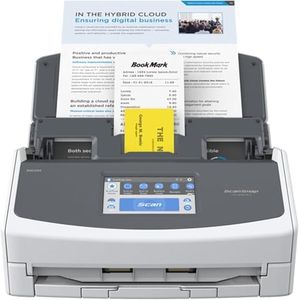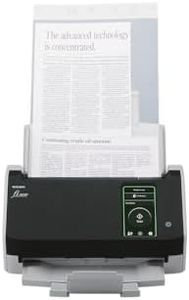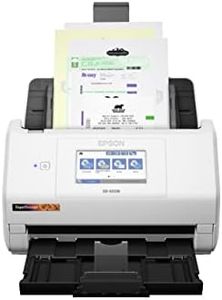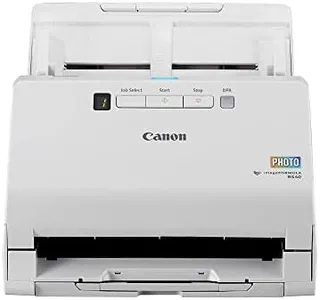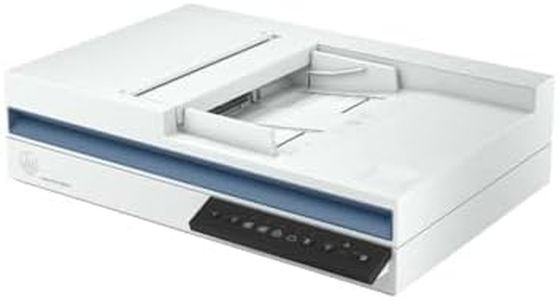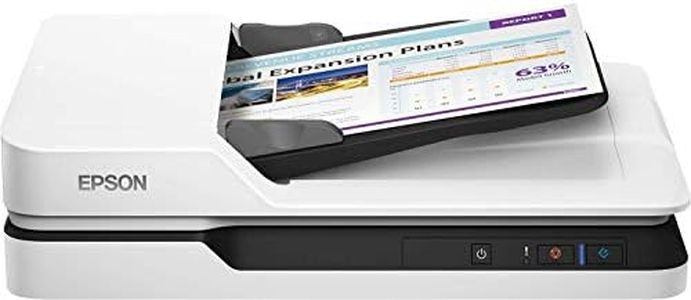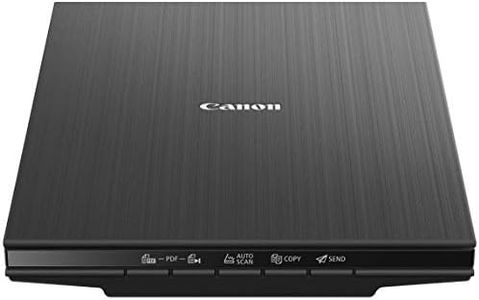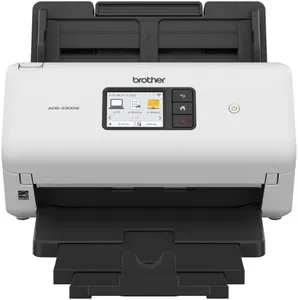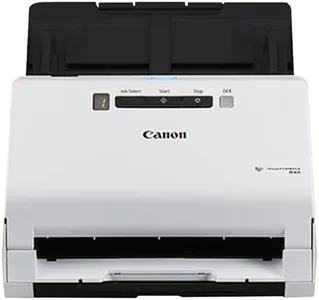We Use CookiesWe use cookies to enhance the security, performance,
functionality and for analytical and promotional activities. By continuing to browse this site you
are agreeing to our privacy policy
10 Best Desktop Scanners
From leading brands and best sellers available on the web.Buying Guide for the Best Desktop Scanners
When considering a desktop scanner, it's important to think about how you'll use it. Are you scanning single pages, double-sided documents, photos, or even receipts? Knowing your typical workload and the kinds of items you scan most will help guide your choice. Also, consider your available space and how often you plan to use the scanner. Focusing on features that match your habits will result in a smoother and more efficient experience.Scan Resolution (DPI)Scan resolution, measured in DPI (dots per inch), describes how detailed the scanned image will be. Higher DPI values mean sharper images and are especially important if you are scanning photographs or small print details. For most standard document scanning, a DPI of around 300 is sufficient, as it provides clear text and good legibility. If you are digitizing photographs or documents for archival purposes where detail is crucial, seek scanners with higher DPI capabilities, such as 600 or above. Consider what you usually scan—if it’s mostly documents for emailing or archiving, standard DPI is fine, but if image quality is paramount, opt for a higher value.
Scan Speed (Pages Per Minute - PPM)Scan speed indicates how many pages the device can digitize per minute and affects how quickly you can process documents. Faster speeds are helpful if you scan large batches of documents frequently, as they save time. Devices may list both simplex (single-sided) and duplex (double-sided) speeds. For occasional use or small volumes, lower speeds will suffice and won’t affect your workflow; for office environments or heavy users, faster scanners make operations much more efficient.
Automatic Document Feeder (ADF)An Automatic Document Feeder allows you to load a stack of pages for the scanner to handle on its own, which is essential for processing multi-page documents without manual effort. If you regularly scan contracts, books, or lengthy documents, an ADF can make life much easier and faster. For those who only scan single sheets occasionally, a flatbed scanner without ADF may be enough and often takes up less space.
Duplex ScanningDuplex scanning refers to the ability to scan both sides of a document automatically in one pass. This feature is invaluable if you need to digitize double-sided documents frequently. If you mostly work with single-sided papers or photos, you may not need duplex scanning, but for offices and those with lots of double-sided content, it is a big time-saver.
Connectivity OptionsConnectivity options describe how the scanner connects to your computer or network. Common options include USB, Wi-Fi, and Ethernet. USB is straightforward and suitable for personal use at a single workstation. Wi-Fi or Ethernet connectivity enables sharing the device among several users or scanning directly to cloud storage. Consider whether you’ll need wireless flexibility, network access, or mobile scanning, and choose the connection method that best fits your daily setup.
Supported Media Types and SizesThis specification indicates what types and sizes of documents the scanner can accommodate—for example, standard letter-sized paper, legal documents, photos, business cards, or receipts. If your needs go beyond standard sheets, make sure the scanner supports specialty sizes. Think about the variety in your workflow: do you only process standard documents or also cards, photos, and book pages? Choose according to what you handle most.
Software FeaturesSoftware features encompass tools that help you manage, edit, and organize scanned files. These may include OCR (Optical Character Recognition) for turning scanned text into editable digital text, file management tools, and direct-to-cloud functions. If you need searchable PDFs or integration with other software, pay attention to included and compatible software options. Pick a scanner that makes post-scan processing as simple or advanced as you require.
